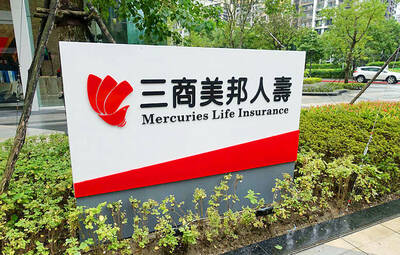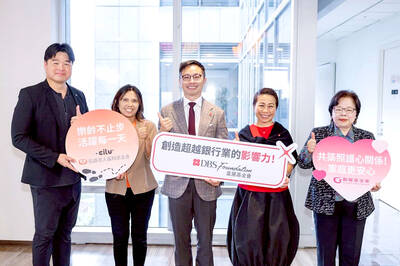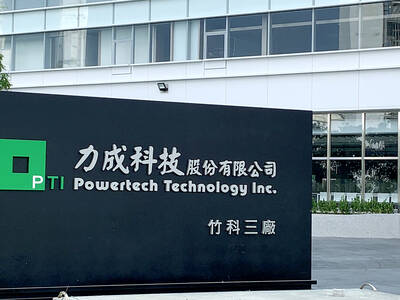Asian stocks advanced, led by financial and energy shares, after South Korea’s government announced Asia’s biggest financial rescue package and oil prices climbed for a second day.
Hana Financial Group Inc, which controls South Korea’s fourth-largest bank, surged 8.4 percent after the government guaranteed US$100 billion of lenders’ foreign-currency debt.
Fubon Financial Holding Co (富邦金控) added 6.7 percent after agreeing to buy ING Groep NV’s life insurance unit in Taiwan.
“Government policies enacted so far have been enough to make sure that the worst of the panic is behind us,” said John Vail, who helps oversee about US$118 billion as global strategy head at Nikko Asset Management Co. “We do feel uncomfortable being underweight equities when valuations are so low.”
The cautious buying of equities did not translate into a move out of government bonds, with Japanese government bond futures climbing and US Treasury futures nearly unchanged on the day, suggesting investors were still reluctant to take risks.
Governments around the world rushed out further steps to help the private sector, pledging so far well in excess of US$3 trillon to try to stabilize financial markets and resuscitate the banking industry which has been badly damaged by a crisis of confidence.
“A slew of recent policy actions worldwide has provided some relief to the banking sectors in the major economies,” said Kengo Suzuki, a currency strategist at Shinko Securities in Tokyo. “But the state of the market remains very fragile with worries mounting about the global economy and emerging markets,” Suzuki said.
The MSCI index of Asia-Pacific stocks outside Japan rose 1.2 percent. The index suffered a seventh consecutive week of losses last week and remains down 52 percent so far this year.
Hong Kong’s Hang Seng index jumped 2.2 percent, but is down 17.3 percent so far this month.
Japan’s Nikkei average edged up 0.5 percent, though it is down 19 percent this month.
South Korea’s KOSPI fell 1.9 percent, weighed down by stocks with large exposure to global economic trends such as Hyundai Heavy Industries and steel maker POSCO.
Shares of brokerage Mirae Asset Securities, which has a focus on emerging markets, were down 15 percent on market talk of a possible downgrade.
The South Korean government’s rescue package modestly pushed up the won against the US dollar, but analysts said the steps would unlikely be strong enough to reverse what has become a fierce downtrend in global equity markets.
“Korea remains particularly vulnerable to the global credit squeeze/deleveraging, and the economy is doomed to decelerate significantly along with the global recession,” Calyon strategists said in a note.

Mercuries Life Insurance Co (三商美邦人壽) shares surged to a seven-month high this week after local media reported that E.Sun Financial Holding Co (玉山金控) had outbid CTBC Financial Holding Co (中信金控) in the financially strained insurer’s ongoing sale process. Shares of the mid-sized life insurer climbed 5.8 percent this week to NT$6.72, extending a nearly 18 percent rally over the past month, as investors bet on the likelihood of an impending takeover. The final round of bidding closed on Thursday, marking a critical step in the 32-year-old insurer’s search for a buyer after years of struggling to meet capital adequacy requirements. Local media reports

US sports leagues rushed to get in on the multi-billion US dollar bonanza of legalized betting, but the arrest of an National Basketball Association (NBA) coach and player in two sprawling US federal investigations show the potential cost of partnering with the gambling industry. Portland Trail Blazers coach Chauncey Billups, a former Detroit Pistons star and an NBA Hall of Famer, was arrested for his alleged role in rigged illegal poker games that prosecutors say were tied to Mafia crime families. Miami Heat guard Terry Rozier was charged with manipulating his play for the benefit of bettors and former NBA player and

The DBS Foundation yesterday announced the launch of two flagship programs, “Silver Motion” and “Happier Caregiver, Healthier Seniors,” in partnership with CCILU Ltd, Hondao Senior Citizens’ Welfare Foundation and the Garden of Hope Foundation to help Taiwan face the challenges of a rapidly aging population. The foundation said it would invest S$4.91 million (US$3.8 million) over three years to foster inclusion and resilience in an aging society. “Aging may bring challenges, but it also brings opportunities. With many Asian markets rapidly becoming super-aged, the DBS Foundation is working with a regional ecosystem of like-minded partners across the private, public and people sectors

BREAKTHROUGH TECH: Powertech expects its fan-out PLP system to become mainstream, saying it can offer three-times greater production throughput Chip packaging service provider Powertech Technology Inc (力成科技) plans to more than double its capital expenditures next year to more than NT$40 billion (US$1.31 billion) as demand for its new panel-level packaging (PLP) technology, primarily used in chips for artificial intelligence (AI) applications, has greatly exceeded what it can supply. A significant portion of the budget, about US$1 billion, would be earmarked for fan-out PLP technology, Powertech told investors yesterday. Its heavy investment in fan-out PLP technology over the past 10 years is expected to bear fruit in 2027 after the technology enters volume production, it said, adding that the tech would